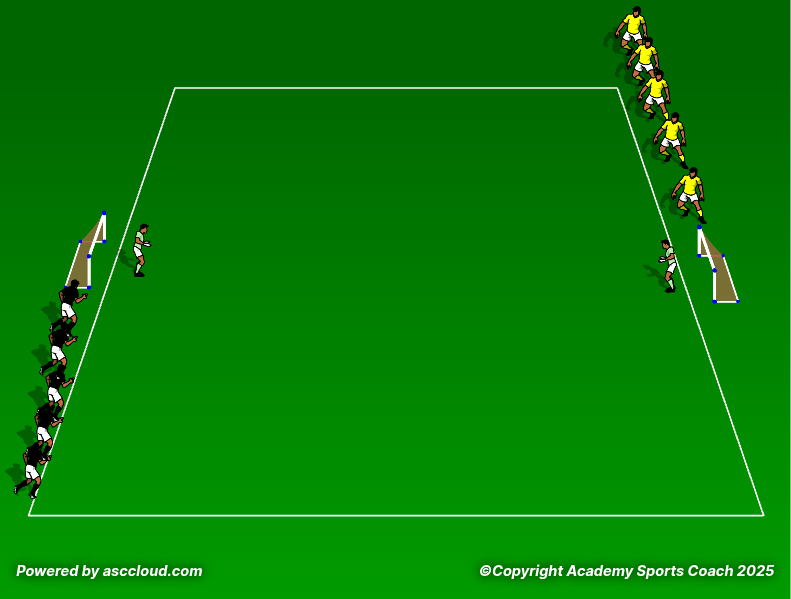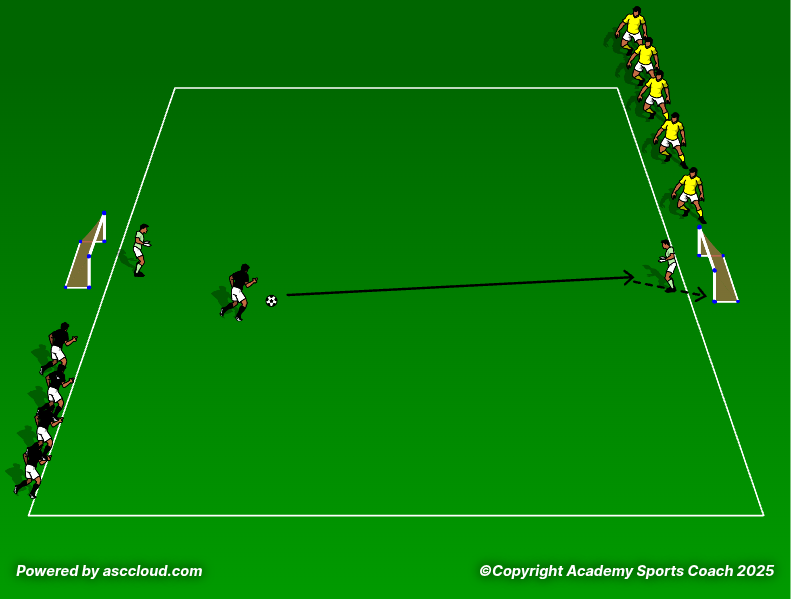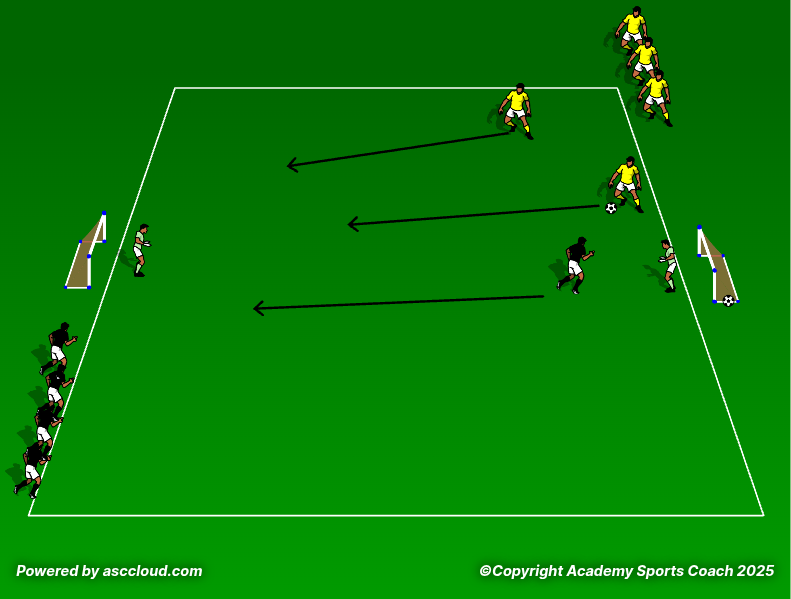By Matt Carroll
Liverpool Transitions
The Liverpool Transitions Drill is a great tool to train players in a variety of transition moments, both attacking and defending, all within one drill. The concept come from their former manager, Jurgen Klopp, and his concept of gegenpressing which relied on heavy pressing high up on the pitch, and lightning quick counter attacks. The Liverpool Transition Drill is one of the tools the team used to imbed this into the DNA of their team.
The drill starts with two teams of 5 standing by a goal placed about 30-40 feet apart. Each goal should have a keeper and a good amount of balls in each net. The players should be arranged in order 1-5 so they know which players will enter the field next. One team should be designated to go first, and they will have their “Player One” ready with a ball.

The drill starts on the coach's whistle, and the starting team's “Player One” immediately begins to dribble towards the opponent's goal. The purpose of this initial moment is to recreate a breakaway, so it may be beneficial to include a 5-second time limit to this portion. Other portions can have a time limit included as well to attempt to increase the pace of the drill, but it is most important in the first stage. They then try to score 1v1 on the goalkeeper.

Whether the player scores, it is saved, or they miss their sho,t immediately “Player One” and “Player Two” on the opposite team of the shooter should have a ball ready and begin to attack the opposite goal as soon as the shot is off. This will force the attacking player to switch from offense to defense immediately. This forces the attacking player to press early, because if they wait it allows the attacking players to better utilize the space provided and they will have a better chance to score on them. The two attacking players should work to attack quickly, not allowing their attack to be slowed by the press, and take advantage of the space on the pitch.

If the attacking players shoot (miss, score, or save), the ball goes out of bounds, or it is intercepted, then 2 new players enter from the first team that went, creating a 3v2. If the ball was shot or went out of bounds, they should bring in a new ball. If the ball was intercepted by the 1 defender, then the ball that is already in play can be used live. This pattern then continues until there is a 5v4. After the team with 5 players shoots, the ball leaves play, or is intercepted, the final player enters the field, and the game goes 5v5.

After the 5v5 portion (which can end as normal with one of the three triggers, or can keep being played until someone scores), the game resets with the team that did not start last time, starting with their “Player One,” and the drill repeats.
By Matt Carroll


